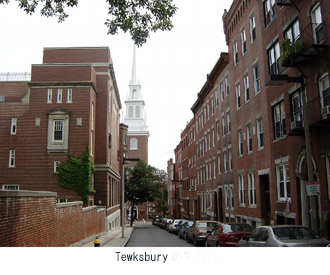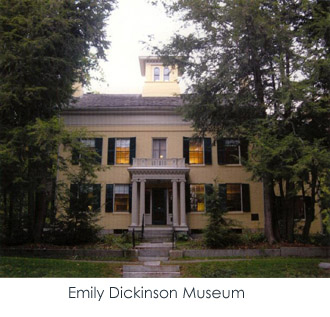Current state of cultural asset conservation in the United States
Makoto Tawada
Kaneka Corporation, Advanced Polymer Materials R&D Center
(Reproduced in English from the Japanese issue with the permission of Conservation Association of Hatada House http://culture-h.jp/hatadake-katsuyo/bun14.html
(English translation by Koichi Hatada and Makoto Tawada)
Issued August 25, 2006
I had been at Lowell, Massachusetts for two years from September 2002. Besides studying polymer chemistry at University of Massachusetts Lowell, I had a good chance to visit several cultural assets, such as old buildings or old towns, in Massachusetts. I would like to express my views concerning current state of cultural asset conservation in the United States from the perspective of my experiences.
In Massachusetts, there are a lot of historical sites since the foundation of the United States, such as the Puritanfs landing site, ruins of the American War of Independence, and Boston which is one of the oldest city in the United States. As just described, Massachusetts is a district where the spirit of the old and good America remains exactly. One of the most famous historical places in Massachusetts is the Historic Deerfield(http://www.historic-deerfield.org/). Deerfield is a town placed in west part of Massachusetts and is still active town which shows signs of a prosperous 18th ?19th New England town. The Historic Deerfield includes 13 small old houses, which conserve the architecture and artifacts and remind of traditional New England lifestyle. DeerfieldAcademy in this town is a private college preparatory school, founded in 1797, which is still active small school of about 600 students and 120 faculties.
 The town of Tewksbury where I had lived was a small town near New Hampshire.
It was a town of typical New England style; there were a church with a
high tower at the town center where main streets intersected and around
the church there were public facilities such as schools and a town hall.
In the town, there existed not only old buildings such as churches but
also new ones; the latter were designed to harmonize with the old ones
well, and as a result, the entire town was keeping stable and peaceful
atmosphere. It is particularly worth noting that old buildings with high
cultural values blend right in with street. On this point, I think that
the current state of cultural asset conservation in Japan is far inferior
to that in the United States.
The town of Tewksbury where I had lived was a small town near New Hampshire.
It was a town of typical New England style; there were a church with a
high tower at the town center where main streets intersected and around
the church there were public facilities such as schools and a town hall.
In the town, there existed not only old buildings such as churches but
also new ones; the latter were designed to harmonize with the old ones
well, and as a result, the entire town was keeping stable and peaceful
atmosphere. It is particularly worth noting that old buildings with high
cultural values blend right in with street. On this point, I think that
the current state of cultural asset conservation in Japan is far inferior
to that in the United States.
As one of the policies for the cultural asset conservation in the United States, a national project named Save America 's Treasure(http://www.saveamericastreasures.org/) started in 1998. This is a project to support conservation and restoration of the cultural properties organically by developing cooperative relationship with the National Park Service which is carrying out maintenance management of the national park, and the National Trust for Historic Preservation which is supporting conservation and maintenance of historical buildings. Since the project had been started, 242 million dollars in total was used to investigate and to restore various cultural properties. During Clintonfs presidency, 95 million dollars had been provided under each yearfs budget for the project. The budget has been, however, reduced to 30 million dollars per year from 2002 when President Bush assumed his position.
Emily Dickinson Museum (http://www.emilydickinsonmuseum.org/index.html)  is included the cultural property conservation by this project. Dickinson
is a representative woman poet of the United States in the 19th century.
Her birthplace still remains as a museum in Amherst, Massachusetts. The
Emily Dickinson's Homestead began as a fashionable Federal style house,
one of the earliest brick structures in Amherst, and originally painted
red to mask the color and texture variations of bricks and mortar. Since
then the house had been painted in various color schemes until 1916 when
the woodwork was painted white in accord with early twentieth-century colonial
revival tastes. Then the house had been exposed unrelentingly to the weather,
leading to the deterioration of mortar and brick. Large-scale restoration
(http://www.emilydickinsonmuseum.org/restoration.html) of the building was performed in 2004, and the appearance at the time
of the 19th century was revived. The building has been presently used as the EmilyDickinson Museum, where various events
such as open house to the public, recitation meeting and lecture meeting
of Dickinsonfs poetry are held. It is pretty common in the United States
that buildings with historical values are restored and conserved, and various
cultural activities are held there, like the Emily Dickinson Museum.
is included the cultural property conservation by this project. Dickinson
is a representative woman poet of the United States in the 19th century.
Her birthplace still remains as a museum in Amherst, Massachusetts. The
Emily Dickinson's Homestead began as a fashionable Federal style house,
one of the earliest brick structures in Amherst, and originally painted
red to mask the color and texture variations of bricks and mortar. Since
then the house had been painted in various color schemes until 1916 when
the woodwork was painted white in accord with early twentieth-century colonial
revival tastes. Then the house had been exposed unrelentingly to the weather,
leading to the deterioration of mortar and brick. Large-scale restoration
(http://www.emilydickinsonmuseum.org/restoration.html) of the building was performed in 2004, and the appearance at the time
of the 19th century was revived. The building has been presently used as the EmilyDickinson Museum, where various events
such as open house to the public, recitation meeting and lecture meeting
of Dickinsonfs poetry are held. It is pretty common in the United States
that buildings with historical values are restored and conserved, and various
cultural activities are held there, like the Emily Dickinson Museum.
As a matter of course, old traditional buildings are restored and conserved also in Japan. but they are mostly the buildings with precious architectural style or those relating to famous historical persons. In the meanwhile, the number of the registered tangible cultural properties that are chosen giving priority to the conservation of a street of old stores and houses exceeded 5000 last year in Japan. Moreover, the attempts utilizing the building for the cultural activities like those in the Hatada Family House in Osaka, Japan, are expected to increase gradually. From the historical view point, cultural properties in Japan have played an important role in local community. Biggest buildings or houses in local community were not only integration of Japanese superior timber construction methods but also social gathering or educational place, consequently cultural backbone in the local community. The author hopes strongly that the conservation of cultural properties is recognized widely in Japan to be necessary not only from the historical point of view but for improving the level of education and the cultural level of the community.